
Keywords: population dynamics

|
Rescue by gene swamping as a gene drive deployment strategyKeith D. Harris, Gili Greenbaum, Cell Reports, 42. 2023.
Gene drives are genetic constructs that can spread deleterious alleles with potential application to population suppression of harmful species. As gene drives can potentially spill over to other populations or species, control measures and fail-safe strategies must be considered. ... Keywords: asian carps, bighead carp, fish, Fisheries management, Genetic control, grass carp, great-lakes, illinois river, Invasion ecology, models, Network-node, population dynamics, risk, sea-lamprey, Spatial model, Trojan Y, Trojan-Y Chromosome |
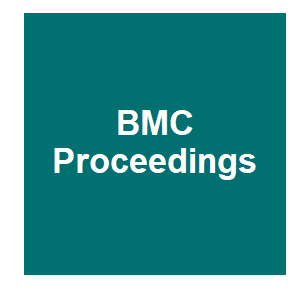
|
Meeting Abstracts from the 5th B Chromosome ConferenceAnonymous, BMC Proceedings, 17. 2023.
During preparations for the 5th B-Chromosome Conference (5BCC), rapid and significant progress was observed in the germ-restricted chromosomes (GRCs) study. GRCs are additional chromosomes found only in germ cells and are eliminated from somatic cells in many avian and dipteran ... Keywords: asian carps, bighead carp, fish, Fisheries management, Genetic control, grass carp, great-lakes, illinois river, Invasion ecology, models, Network-node, population dynamics, risk, sea-lamprey, Spatial model, Trojan Y, Trojan-Y Chromosome |
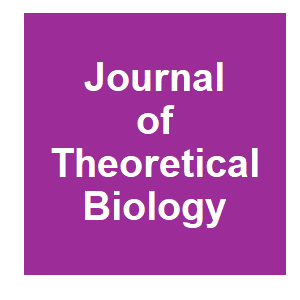
|
Gene drives for the extinction of wild metapopulationsJason W. Olejarz, Martin A. Nowak, Journal of Theoretical Biology, 2023.
Population-suppressing gene drives may be capable of extinguishing wild populations, with proposed applications in conservation, agriculture, and public health. However, unintended and potentially disastrous consequences of release of drive-engineered individuals are extremely ... Keywords: asian carps, bighead carp, fish, Fisheries management, Genetic control, grass carp, great-lakes, illinois river, Invasion ecology, models, Network-node, population dynamics, risk, sea-lamprey, Spatial model, Trojan Y, Trojan-Y Chromosome |
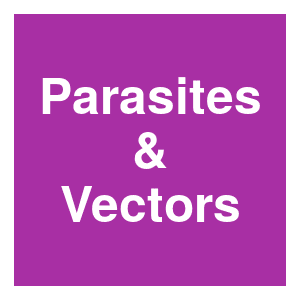
|
Fine-scale estimation of key life-history parameters of malaria vectors: implications for next-generation vector control technologiesA. L. Morris, A. Ghani and N. Ferguson, Parasites and Vectors, 14:311. 2021.
Mosquito control has the potential to significantly reduce malaria burden on a region, but to influence public health policy must also show cost-effectiveness. Gaps in our knowledge of mosquito population dynamics mean that mathematical modelling of vector control interventions ... Keywords: asian carps, bighead carp, fish, Fisheries management, Genetic control, grass carp, great-lakes, illinois river, Invasion ecology, models, Network-node, population dynamics, risk, sea-lamprey, Spatial model, Trojan Y, Trojan-Y Chromosome |
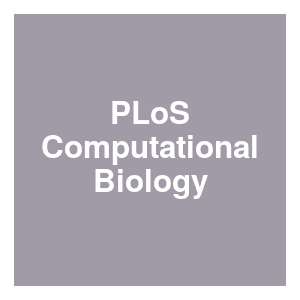
|
MGDrivE 2: A simulation framework for gene drive systems incorporating seasonality and epidemiological dynamicsS. L. Wu, J. B. Bennett, C. H. Sánchez, A. J. Dolgert, T. M. León and J. M. Marshall, PLoS Comput Biol, 17:e1009030. 2021.
We present MGDrivE 2 (Mosquito Gene Drive Explorer 2): a significant development from the MGDrivE 1 simulation framework that investigates the population dynamics of a variety of gene drive architectures and their spread through spatially-explicit mosquito populations. Key ... Keywords: asian carps, bighead carp, fish, Fisheries management, Genetic control, grass carp, great-lakes, illinois river, Invasion ecology, models, Network-node, population dynamics, risk, sea-lamprey, Spatial model, Trojan Y, Trojan-Y Chromosome |

|
Optimal control and analysis of a modified trojan Y-Chromosome strategyM. A. Beauregard, R. D. Parshad, S. Boon, H. Conaway, T. Griffin and J. J. Lyu, Ecological Modelling, 416. 2020.
The Trojan Y Chromosome (TYC) strategy is a promising eradication method that attempts to manipulate the female to male ratio to promote the reduction of the population of an invasive species. The manipulation stems from an introduction of sex-reversed males, called supermales, ... Keywords: asian carps, bighead carp, fish, Fisheries management, Genetic control, grass carp, great-lakes, illinois river, Invasion ecology, models, Network-node, population dynamics, risk, sea-lamprey, Spatial model, Trojan Y, Trojan-Y Chromosome |

|
Gene Drives: Dynamics and Regulatory Matters-A Report from the Workshop “Evaluation of Spatial and Temporal Control of Gene Drives,” April 4-5, 2019, ViennaB. Giese, J. L. Friess, N. H. Barton, P. W. Messer, F. Debarre, M. F. Schetelig, N. Windbichler, H. Meimberg and C. Boete, Bioessays, 41:3. 2019.
Gene Drives are regarded as future tools with a high potential for population control. Due to their inherent ability to overcome the rules of Mendelian inheritance, gene drives (GD) may spread genes rapidly through populations of sexually reproducing organisms. A release of ... Keywords: asian carps, bighead carp, fish, Fisheries management, Genetic control, grass carp, great-lakes, illinois river, Invasion ecology, models, Network-node, population dynamics, risk, sea-lamprey, Spatial model, Trojan Y, Trojan-Y Chromosome |
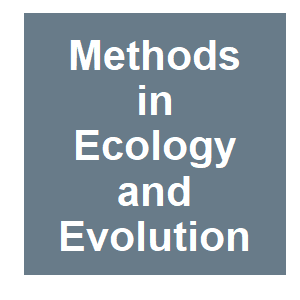
|
MGDrivE: A modular simulation framework for the spread of gene drives through spatially-explicit mosquito populationsSánchez C, HMW, Sean L.; Bennett, Jared B.; Marshall, John M., Methods in Ecology and Evolution, 10:1-24. 2019.
Malaria, dengue, Zika, and other mosquito-borne diseases continue to pose a major global health burden through much of the world, despite the widespread distribution of insecticide-based tools and antimalarial drugs. The advent of CRISPR/Cas9-based gene editing and its ... Keywords: asian carps, bighead carp, fish, Fisheries management, Genetic control, grass carp, great-lakes, illinois river, Invasion ecology, models, Network-node, population dynamics, risk, sea-lamprey, Spatial model, Trojan Y, Trojan-Y Chromosome |
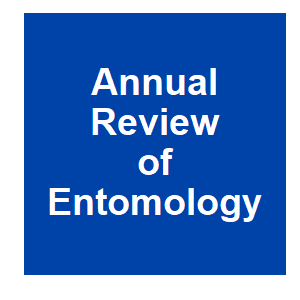
|
Invasion Success and Management Strategies for Social Vespula WaspsP. J. Lester and J. R. Beggs, Annual Review of Entomology, 64:51-71. 2018.
Three species of Vespula have become invasive in Australia, Hawai'i, New Zealand, and North and South America and continue to spread. Economically, their main negative effect is associated with pollination and the apicultural industry. Climate change is likely to exacerbate ... Keywords: asian carps, bighead carp, fish, Fisheries management, Genetic control, grass carp, great-lakes, illinois river, Invasion ecology, models, Network-node, population dynamics, risk, sea-lamprey, Spatial model, Trojan Y, Trojan-Y Chromosome |

|
A spatially discrete, integral projection model and its application to invasive carpR. A. Erickson, E. A. Eager, P. M. Kocovsky, D. C. Glover, J. L. Kallis and K. R. Long, Ecological Modelling, 387:163-171. 2018.
Natural resource managers and ecologists often desire an understanding of spatial dynamics such as migration, dispersion, and meta-population dynamics. Network-node models can capture these salient features. Additionally, the state-variable used with many species may be ... Keywords: asian carps, bighead carp, fish, Fisheries management, Genetic control, grass carp, great-lakes, illinois river, Invasion ecology, models, Network-node, population dynamics, risk, sea-lamprey, Spatial model, Trojan Y, Trojan-Y Chromosome |
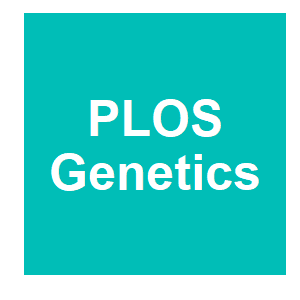
|
Selfish genetic elementsAgren, JAC, A. G., PLOS Genetics, 14:20. 2018.
Selfish genetic elements (historically also referred to as selfish genes, ultra-selfish genes, selfish DNA, parasitic DNA, genomic outlaws) are genetic segments that can enhance their own transmission at the expense of other genes in the genome, even if this has no or a negative ... Keywords: asian carps, bighead carp, fish, Fisheries management, Genetic control, grass carp, great-lakes, illinois river, Invasion ecology, models, Network-node, population dynamics, risk, sea-lamprey, Spatial model, Trojan Y, Trojan-Y Chromosome |

|
Demographic effects on the use of genetic options for the control of mosquitofish, Gambusia holbrookiR. E. Thresher, M. Canning and N. J. Bax, Ecological Applications, 23:801-814. 2013.
This study tests the sensitivity of genetically based pest control options based on sex ratio distortion to intra-and intersexual aggressive interactions that affect male and female survival and fitness. Data on these interactions and their impacts were gathered for the ... Keywords: asian carps, bighead carp, fish, Fisheries management, Genetic control, grass carp, great-lakes, illinois river, Invasion ecology, models, Network-node, population dynamics, risk, sea-lamprey, Spatial model, Trojan Y, Trojan-Y Chromosome |

|
Analysis of the Trojan Y chromosome model for eradication of invasive species in a dendritic riverine systemJ. B. Gutierrez, M. K. Hurdal, R. D. Parshad and J. L. Teem, Journal of Mathematical Biology, 64:319-340. 2011.
The use of Trojan Y chromosomes has been proposed as a genetic strategy for the eradication of invasive species. The strategy is particularly relevant to invasive fish species that have XY sex determination system and are amenable to sex-reversal. In this paper we study the ... Keywords: asian carps, bighead carp, fish, Fisheries management, Genetic control, grass carp, great-lakes, illinois river, Invasion ecology, models, Network-node, population dynamics, risk, sea-lamprey, Spatial model, Trojan Y, Trojan-Y Chromosome |
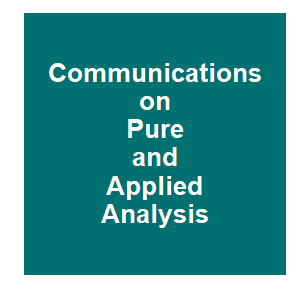
|
On the global attractor of the Trojan Y chromosome model.R. D. Parshad and J. B. Gutierrez, Communications on Pure and Applied Analysis, 10:339-359. 2010.
We consider the Trojan Y Chromosome (TYC) model for eradication of invasive species in population dynamics. We present global estimates for the TYC system in a spatial domain. In this work we prove the existence of a global attractor for the system. We derive uniform estimates to ... Keywords: asian carps, bighead carp, fish, Fisheries management, Genetic control, grass carp, great-lakes, illinois river, Invasion ecology, models, Network-node, population dynamics, risk, sea-lamprey, Spatial model, Trojan Y, Trojan-Y Chromosome |

Contact
David O’Brochta
Foundation for the
National Institutes of Health
geneconvenevi@fnih.org
RSS

